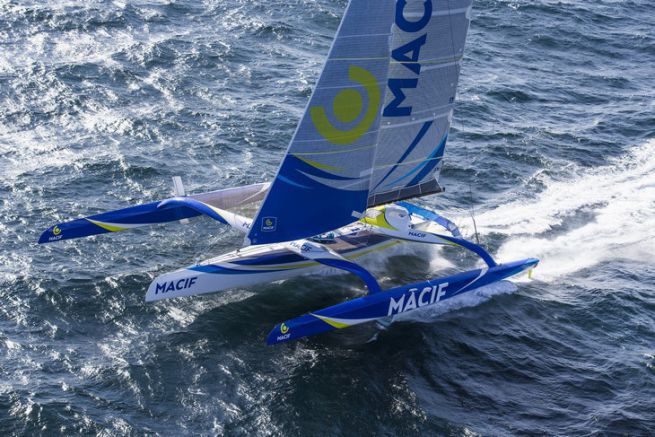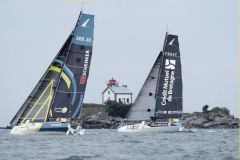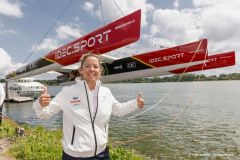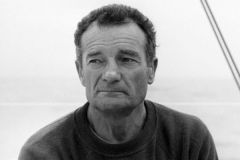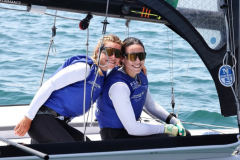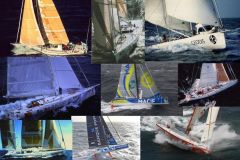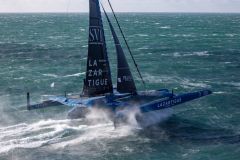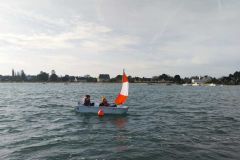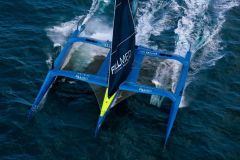An archimedean trimaran
When it is launched on August 18, 2015, the trimaran Macif was first and foremost an archimedean boat, but with a stated goal of getting even more out of the water thanks to foils clearly inspired by the AC72s of the 2013 America's Cup.
"There was a desire to be more airy than before by relieving more of the load on the platform confirms Antoine Gautier. At the time, the foils of the boats supported 50% of a boat's displacement at a given speed, we wanted to increase that to 70-75%, so in our appendage drawings we went a little bit further to make it carry more, but we never thought we'd fly completely, we just wanted to fly the float and still have a small piece of center hull in the water."
But since then, a new America's Cup has gone by and two new latest generation Ultimes as well: the Maxi Edmond de Rothschild and Banque Populaire IX in 2017. Since then the MerConcept team has been working to evolve the trimaran towards a more flying version. Work began in January 2018 and will be completed at the end of June.
"Reflection began in 2017 explains Antoine Gautier. We knew we were going to have "more serious" competitors, so we would need a major upgrade to be able to play with them. From the launch in 2015, we also knew that our pair of foils were already outdated, we were only just starting out. Same thing for the rudders. In two or three years, with the addition of the Cup, things have changed enormously, both in terms of design tools and in terms of knowledge/specifications and manufacturing methods."
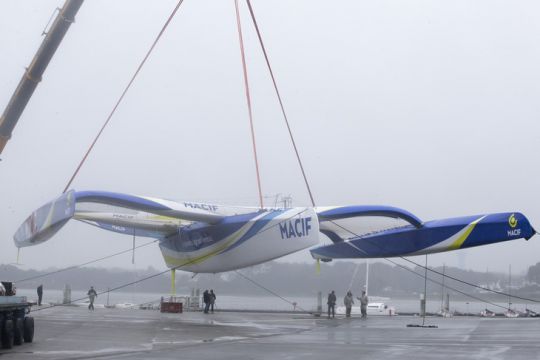
New appendages for the trimaran Macif
After the decision to equip the trimaran with new appendages (foils and rudders), the design office started working in March 2017 with the architects from the VPLP firm for the design and with the GSea Design firm for the structure.
"We start by defining a set of specifications based on the experience we've gained so far from the boat. We then try to respond to them by numerically testing several geometries, looking at the structural constraints they imply. It's a continuous loop to arrive at a geometry that is considered to be the best compromise between the issues of performance, reliability, stability and mass", details Antoine Gautier.
This study phase - completed in October 2017 - then gave way to the construction phase divided among several players. CDK Port-La-Forêt took care of the foils, C3 Technologies in La Rochelle of the rudders, the Macif design office worked on the foils systems and the modification of the daggerboard, AwenTech, a company headed by Bernard Pointet, on the rudder systems, while at Madintec, the work focused on the future autopilot to adapt it to the new behaviour of the boat.
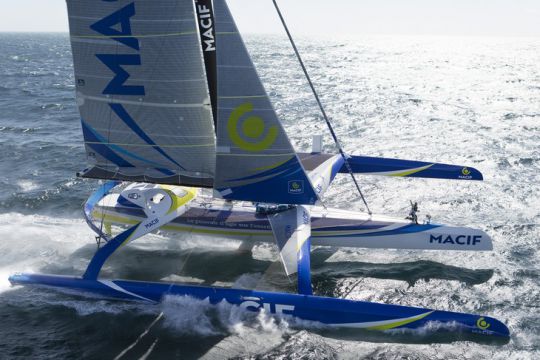
A decisive launch
The trimaran will be relaunched in mid-July, after a 6-month refit. However, to avoid any competition, the yard is letting little information about these new foils.
"Let's say the foils will be a bit sexier than our V1 and their geometry will be a bit more radical than what has been done on the latest boats, but a novice won't necessarily see the difference. On the rudders, it will be more striking: they will be equipped with deeper and more importantly liftable rudders, which was not the case on our V1; it's a completely different philosophy" explains Alain Gautier. On performance, the head of the design office also remains discreet: "We have some theoretical figures that we find surprising, because the gain seems huge, but we're waiting until we're on the water to confirm it. More importantly, the question for us is whether we'll go fast enough compared to our competitors."
For the whole Macif team and its skipper François Gabart, it's a new boat that we're going to have to get to grips with. "We consider that we are launching a new boat, which means that we expect it to behave in a completely different way, with probably even more acceleration. As long as we haven't sailed, we can't say whether MACIF will be more or less safe, but what is certain is that safety is a subject that concerns us on a daily basis, we have a real responsibility as a player in the Ultimate class, we have to be beyond reproach" concludes Antoine Gautier.
